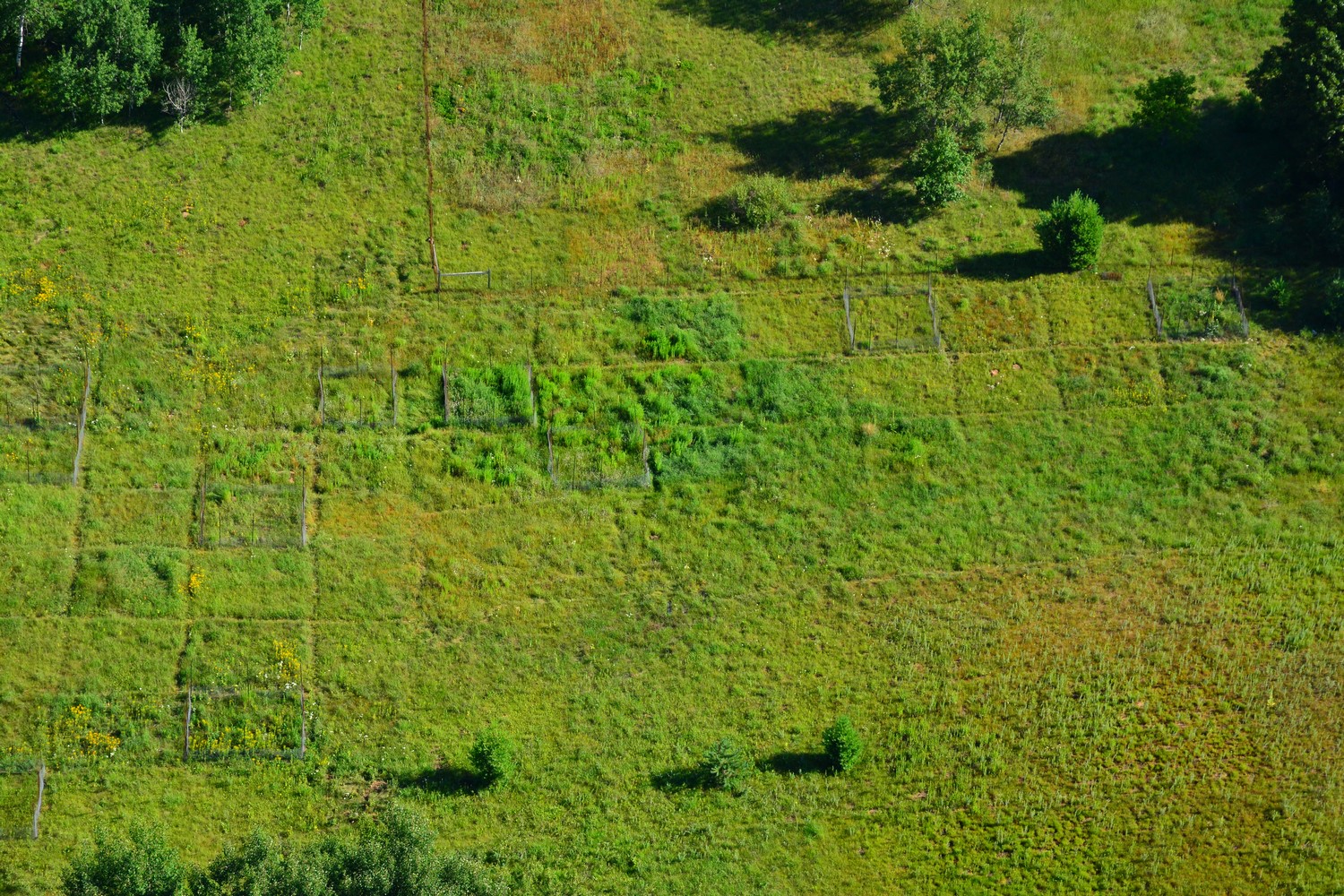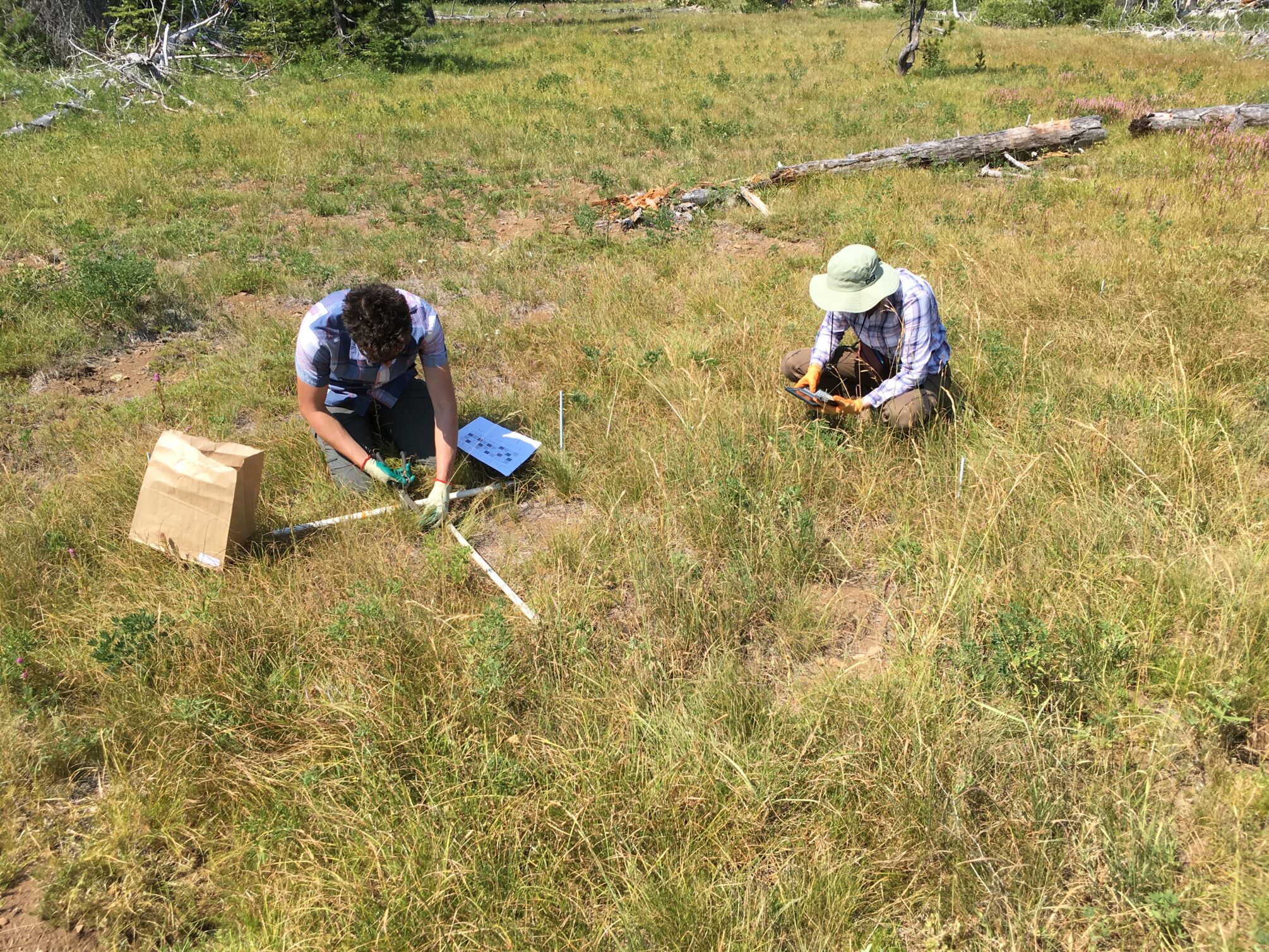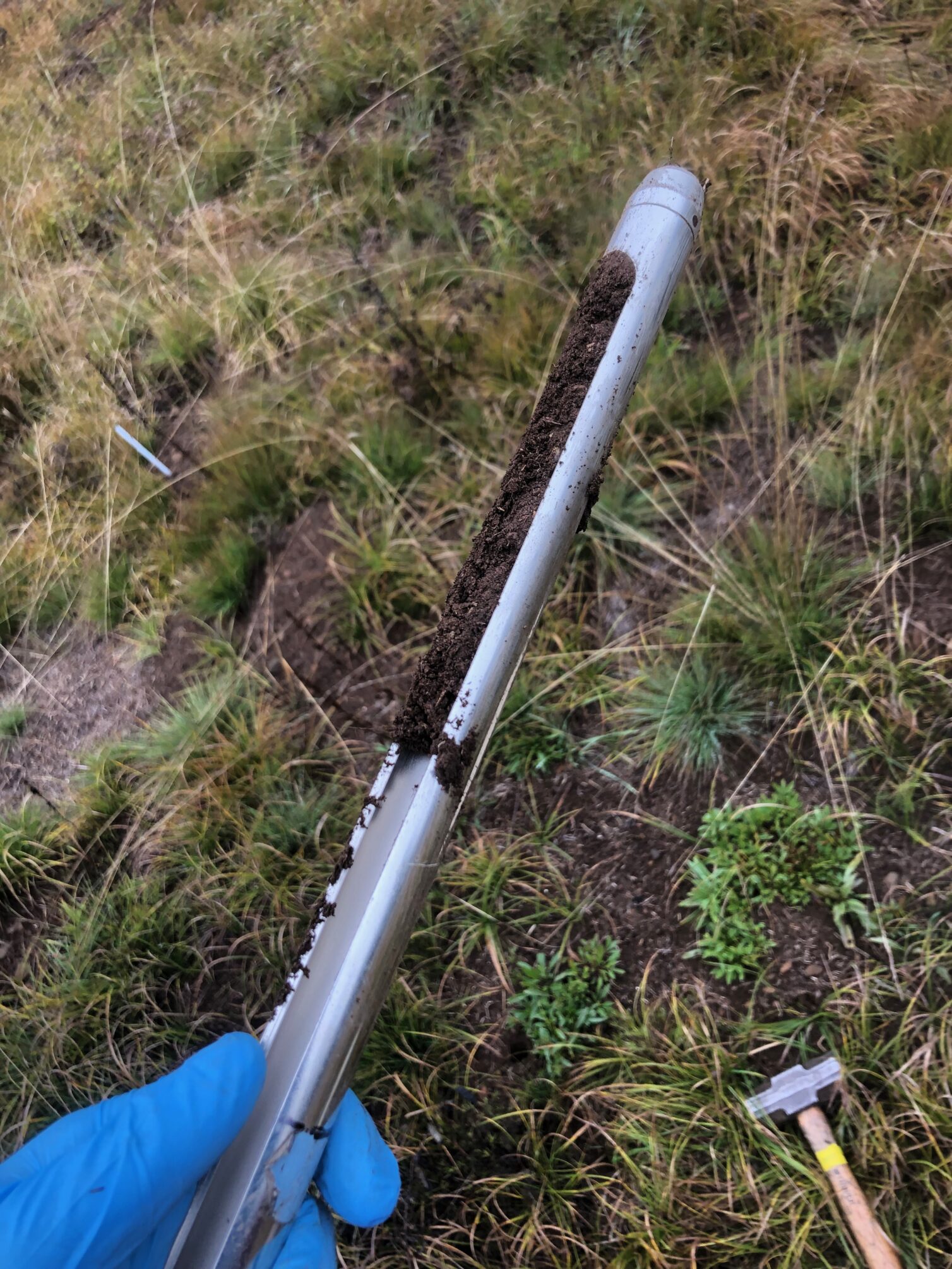By Katie Sperry, graduate student at Northeastern University and the PIE LTER
A new study in the Journal Ecology finds that nutrient addition increases aboveground plant growth more than it increases belowground plant growth, suggesting that belowground ecology cannot be predicted from studies conducted only aboveground.

Credit: Jacob Miller, CC BY-SA 4.0.
There is a whole world teeming under our feet. Below us, roots, microbes, fungi, and small animals squirm, making their homes in the dirt. “It’s the hidden world,” says Dr. Adrienne Keller, the lead author on a recent paper in Ecology studying the above and belowground effects of nutrient enrichment. “Even if it’s subconscious, people are aware of aboveground ecology,” —they can see the stems, leaves, and trunks of plants. “But very few times do they say, ‘let’s see what’s in the soil’.”
The aboveground parts of a plant are only a fraction of a plant’s biomass. Belowground parts, namely roots, are far less commonly studied; they’re harder to see, and they’re harder to sample. As a result, researchers often assume processes, like growth, happen at equivalent rates above and belowground. However, the veracity of this equivalency requires scrutiny, and explicitly comparing ecology above and below the surface can lead to more accurate conclusions about pressing issues affecting the world up here.
What happens above doesn’t happen below
To this end, Dr. Keller and her colleagues, notably Dr. Christopher Walter who led the field work, studied above and below-ground responses to ten years of nitrogen and phosphorus addition at nine US grasslands. These included four LTER sites; Cedar Creek, Konza Prairie, Sevilleta, and Shortgrass Steppe. Their goal was to see if nutrient addition had similar effects on plants above and belowground across a number of different grassland sites. Their experimental design is a part of the Nutrient Network—a long-term nutrient-addition experiment in grasslands around the world.

Credit: Eric Seabloom, CC BY-SA 4.0.
They found that adding nutrients increased aboveground biomass—an expected result given prior fertilization studies in the Nutrient Network and elsewhere. They found that N and P addition yielded 30 and 36% increases, respectively, in aboveground biomass. This makes sense: when a plant receives more essential nutrients, it can grow faster.
However, while stems and leaves reacted to nutrient addition as expected, roots did not. P addition increased root production by an average of 15%, but N addition had no consistent effect on roots across sites. The modest response of roots to P and lack of response to N highlight that roots and shoots are fundamentally different. As such, root responses to nutrient addition cannot be accurately predicted by measuring aboveground responses, a finding that underscores the importance of studying plants above and below the surface.
Small results can have big consequences
The exact reasons for the study’s modest root response to nutrient addition are yet unknown, but Dr. Keller and her colleagues’ research has important implications for how to think about belowground processes. In fact, the modesty of belowground responses to nutrient addition are at the heart of why these results are important. “We often want to push our results and see dramatic changes,” says Dr. Keller, “[but] it’s really important to recognize when you don’t see strong changes [in an experiment].”

Credit: Christopher Walter, CC BY-SA 4.0.
To exemplify this, Dr. Keller explains that one hypothesis about nutrient pollution, the main cause of increased nutrients in ecosystems across the world, is that nutrient-induced plant growth will lead to increased soil carbon storage when the extra plant biomass dies and is subsumed by the earth.
However, plant growth above and below ground do not store carbon in the soil to the same degree. “Belowground plant inputs are really important for soil carbon, particularly soil carbon that sticks around for a long time,” says Dr. Keller. Yet this study shows that nutrient addition bolsters aboveground growth far more than belowground. Because nutrient addition only modestly increases belowground growth, nutrient pollution might only cause modest increases in carbon storage.
Modeling nutrient pollution effects on carbon storage using aboveground production estimates, a common tactic in the field, likely yields overestimations, says Dr. Keller. “If we’re modeling [carbon storage] based on aboveground responses, we’re really ignoring half the plant. You can’t just multiply it by two and say what is happening aboveground is happening belowground as well.”
Stuff belowground might not be readily observable or easily studied, but it is linked to our lives above. As Dr. Keller’s study shows, findings from aboveground studies cannot be extrapolated to understand things belowground. Therefore, to accurately understand things of consequence, like carbon storage, more time ought to be spent in the dirt.










